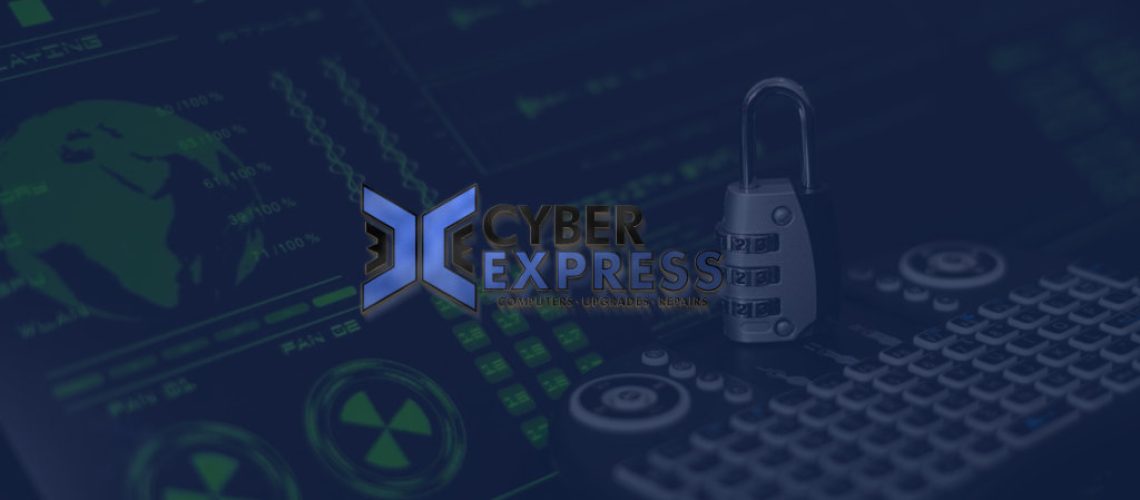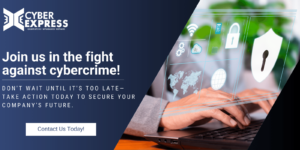Cyber threats are on the rise. Each year, millions of Americans are affected by cybercrime, and the data suggests that the reality of the situation is far worse than many believe. From ransomware to phishing scams, fraud to software exploitation, criminals are using a range of methods to steal corporate data and make illicit financial gains at the expense of US companies. Here are just a few headline stats that illustrate the gravity of the situation:
- In 2023, 8% of US organizations were compromised by 6 or more successful cyber attacks.
- In 2023, 68% of US organizations suffered ransomware attacks, up from 48% in 2022.
- Phishing attacks impacted 84% of organizations in 2022, according to a recent report from cybersecurity firm Proofpoint.
- A 2023 report by IBM found the average cost of a data breach globally to be $4.45 million.
Deploying tactical measures to shield your business against digital threats is no longer an option, but a strategic imperative. Failing to take the right precautions could see your businesses suffer a materially impactful cyber breach. This could result in damage to your reputation, erosion of trust among your customer base, operational downtime that impacts revenue, and the possibility of fines and legal action.
Cyber Express – Proactive Managed IT Services for Mahoning County Businesses
Cyber Express is a full-service IT support provide,r committed to helping businesses across Ohio reap the benefits of secure, reliable, and optimized business IT. Our friendly, expert team stands ready to help you solve persistent IT challenges, providing customized solutions and services that deliver strategic value for your business. From our home in Boardman, we serve businesses across Youngstown, Mahoning County, and the wider region.
Today, almost every business maintains a digital presence in one way or another. While digital connectivity can be a catalyst for business success, it can also present risks that must be effectively managed. Ensuring your business has solid cybersecurity defenses in place is vital to safeguarding your data, protecting the interests of employees and customers, and avoiding damaging setbacks that could impact the growth of your business.
In this short blog series, we’ll outline best practices and technologies that are essential for maintaining a robust cyber defense framework. Use this guidance in your next meeting with your IT team to ensure your digital systems are being adequately protected.
5 Best Practices for Effective Defense Against Online Threats
In this article, we’ll look at the practices and procedural steps you can take to keep online threats at bay. These measures will involve your whole team, so include your employees in the conversation, and make them an integral part of your cybersecurity journey.
Secure Password Management
Your passwords are the keys to your digital estate, so managing them carefully is vital. Start by creating a password policy. This document should dictate the minimum standards for passwords across your digital accounts. Follow these best practices to ensure your passwords are resistant to hacking attempts:
- Create Long Passwords: Passwords should be in excess of 12 characters long.
- Create Complex Passwords: Include both uppercase and lowercase letters in your passwords, as well as numbers and special characters.
- Use Phrases to Make Passwords Memorable: You want your passwords to be long and difficult for an attacker to guess, but not so obscure that your team have a tough time remembering them. Use memorable phrases, provided these are not closely related to you, your town, or any identifying characteristic of your business.
- Use Unique Passwords: Make sure each account password is completely unique. Never use the same password, or even variations of a password across multiple accounts. Password reuse can put multiple accounts at risk in the event that one is hacked.
- Use a Password Manager: Password managers make it easy to create, manage, store, and update passwords across numerous online accounts. These useful tools typically store passwords in an encrypted format and provide added security through features like multi-factor authentication.
Approach Unknown Links and Attachments with Caution
Links and attachments are often used by cybercriminals in their malicious schemes. Links are often used to harvest account credentials by redirecting users to sham replicas of legitimate websites. Attachments are often presented as an important software update or a file from a colleague, with users unaware of the harmful malware payload lurking inside.
Encourage employees to exercise vigilance, and adhere to the following best practices to mitigate the risks posed by links and attachments:
- Verify the Sender: Use an alternative contact method to reach out to the person a message claims to be from. Verify that they have sent you the link or attachment before proceeding to click on it.
- Look for the Signs of Phishing: Look for giveaway signs of an attempted phishing scam, such as typos, grammatical errors, and discrepancies between the URL in a link and that of the organization the sender claims to be from. Hover over links to read the unabridged URL and check for the presence of an https connection to ensure it’s secure.
- Use Antivirus Software: Run reputable and up-to-date antivirus software to screen attachments for the presence of malware.
- Disable Macros: Macros are small programs embedded within Microsoft Office applications that attackers can use for malicious purposes, such as stealing or encrypting data. Exercise caution if an attachment requests that you enable macros, and if possible, ensure macros are turned off by default.
- Use Email Filtering Solutions: Deploy email filtering software that’s able to detect and intercept suspicious mail. Modern email security tools can even analyze the language used in emails to determine whether a message originated from its claimed source.
Implement Multi-factor Authentication (MFA)
Multi-factor authentication (MFA) is an authentication protocol that requires users to submit an additional verification factor when logging into an account, in addition to their username and password. This helps to protect accounts against hacking attempts, as this additional verification factor adds another layer of account protection that cannot easily be cracked or spoofed by an attacker.
Observe the following best practices to ensure a successful MFA rollout in your business:
- Assess Your Needs: Identify critical systems and sensitive data stores where MFA stands to deliver the greatest security benefit and prioritize these locations in your rollout.
- Choose the Right Verification Factors: Additional verification factors might include something you know (a pin, or the answer to a security question), something you are (biometric identifiers like a fingerprint scan), or something you have (a security token, or passcode sent to a secondary device). Choose an authentication mechanism that balances security with usability.
- Train Employees: Explain the reasons behind your MFA implementation and what it seeks to achieve. Ensure staff understand how to activate and use MFA through the provision of training sessions and resources.
- Carry out Phased Deployment: Introduce MFA incrementally across your business, starting with systems and users with more exacting security needs. This will allow you to troubleshoot issues ahead of more widespread deployment.
Enrol Staff on Cybersecurity Awareness Training
The vast majority of data breaches start with user error, so it’s vital to empower staff with cybersecurity training in order to prevent avoidable security incidents. Awareness training arms employees with the insights and knowledge necessary to thwart common cyber attacks, and it gives them the skills they need to handle your business’s data securely and compliantly.
Develop a comprehensive training program to foster a culture of cybersecurity awareness within your business. An effective training program should:
- Cover a Broad Range of Topics: Training should educate staff on a wide range of cyber risks and best practices. Essential topics include phishing, data protection and privacy, malware, password management, and secure browsing practices.
- Feature Regular Training Sessions: Learning should be carried out regularly to engage staff with current cybersecurity themes, and to maintain cyber threat vigilance.
- Contain Assessments and Simulations: Assessments and simulation exercises are a great way to evaluate learning outcomes and expose staff to the methods used by cyber threat actors.
- Be Introduced at every Level of Your Business: Everyone in your business, from senior managers to junior office staff, should have the opportunity to undertake security awareness training. Consider making your training program mandatory for employees in roles involving sensitive information and heightened data security risks.
Use Mobile Device Management Software
The increase in remote and hybrid working arrangements has led to a rise in the use of mobile devices for work purposes, including laptops, tablets, and mobile phones. These devices are exposed to many of the same security threats as office workstations, so it’s important to be able to monitor, manage, and configure them for maximum security.
Mobile device management (MDM) software allows your IT team to do just that, providing a centralized interface that makes it easy to govern and secure remote devices. By adopting an MDM solution you’ll be able to:
- Configure Devices for Maximum Security: Fortify your defenses by remotely configuring access controls, security settings, data privacy policies, and more.
- Manage Device Applications: Furnish devices with the apps and tools employees need for their roles. Apply download restrictions on unnecessary software, configure app security settings, and manage updates.
- Enforce Security Policies: Ensure devices are configured in alignment with your company’s security policies by mandating a range of controls and policies, including multi-factor authentication, encryption, and password criteria.
- Remotely Lock and Wipe Devices: Should a device be stolen or misplaced, MDM allows you to remotely lock the device and even wipe the data held within it, preventing sensitive information falling into potentially hostile hands.
Final Thoughts
Cybersecurity is a journey, one that requires proactivity and continuous adaptation to new risks and challenges. By incorporating these best practices within a broader strategy, you’ll foster a culture of cyber awareness in your business, and help protect your digital systems against a wide range of active threats.
Cyber Express – Responsive IT Support and Strategic Solutions for Ohio Businesses
From our home in Boardman, Cyber Express provides IT support, technology management, cybersecurity services, and class-leading solutions to businesses across Youngstown, Mahoning County, and the wider region. Our approach to IT support ensures our clients enjoy a proactive, friendly, and tailored service that addresses key challenges and delivers growth-enabling technology. Get in touch today to discuss your IT support or computer repair needs. Our friendly team can’t wait to take your call.


